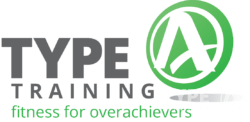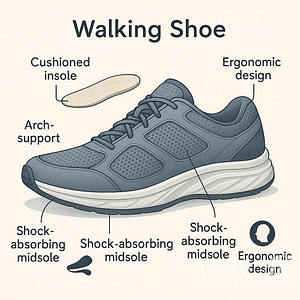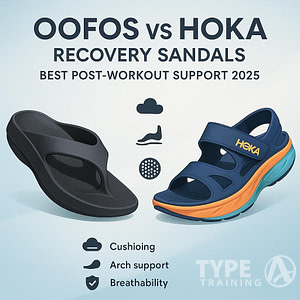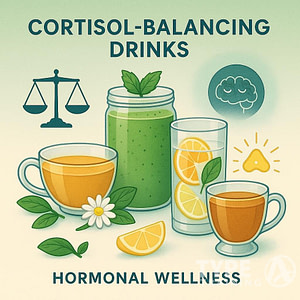When searching for a personal trainer for seniors, there are certain key attributes to consider that cater to the unique requirements of an older demographic.
Your fitness and health are paramount, especially as you age, which is why you deserve a trainer who not only understands the nuances of elder training but also prioritizes enhancing your quality of life.
Personal trainers equipped with the right mix of skills can offer safe, effective exercise regimens that contribute significantly to a senior’s physical health, mental well-being, and overall independence.
Related: Type A Training – In-home Training for Seniors in NYC
Popular posts:
One critical quality in a personal trainer specializing in senior fitness is a blend of formal education and practical experience with older clients.
This combination ensures that your trainer is versed in creating tailor-made workouts that accommodate any age-related changes in your body, taking into account factors like muscle mass, bone density, and joint health.
Trainers who excel in this field adopt a patient and encouraging attitude, fostering a supportive environment where you feel valued and understood.
The demeanor of a personal trainer also significantly affects your training experience.
A trainer with a respectful, professional approach who recommends exercises for disease prevention and enhanced mobility can help you commit to a lifestyle of fitness.
This expertise allows you to achieve and maintain your health goals, supporting an independent and active lifestyle as you age.
Investing in the right personal trainer can indeed help you stay fit and healthy, enabling you to enjoy your golden years with confidence.
Understanding the Unique Needs of Senior Clients
When working with seniors, it’s vital to recognize their unique requirements.
Your approach should be comprehensive, considering factors like age-related limitations and the increased risk of falls due to poor balance and coordination.
Assessing Fitness and Mobility Levels
Your first step is to conduct thorough assessments of fitness and mobility.
Tailor these evaluations to gauge:
- Strength: Utilize simple resistance exercises to measure upper and lower body strength.
- Endurance: Observe how seniors manage with light cardiovascular activities.
- Mobility: Check range of motion through gentle stretching exercises to understand flexibility.
Remember that seniors may have varying levels of fitness, and some might be dealing with chronic conditions that limit their mobility.
Recognizing the Importance of Balance and Coordination
Focus on balance and coordination is essential because these abilities diminish as adults age. Here’s what to consider:
- Balance: Design exercises that safely challenge balance, such as standing on one foot or using a wobble board.
- Coordination: Incorporate activities like hand-eye coordination drills or simple dance sequences that promote brain and body connection.
These components are critical as they directly correlate with a senior’s risk of falls and their overall functional independence.
Creating Effective Exercise Programs
When developing exercise programs for seniors, it’s essential to integrate elements that enhance strength, endurance, flexibility, and balance.
These components are vital for maintaining functional independence and reducing the risks of falls and other injuries.
Incorporating Strength and Endurance Training
Strength and endurance are foundational aspects of senior fitness.
Your exercise program should include resistance training that focuses on all major muscle groups, particularly those that support good posture and daily activities.
Lightweight dumbbells, resistance bands, and bodyweight exercises such as wall push-ups are excellent for building muscle strength.
Endurance can be fostered through low-impact aerobic exercises like walking or swimming, starting with shorter sessions and gradually increasing duration.
- Examples of strength training:
- Bicep curls
- Chair squats
- Resistance band exercises
- Tips for endurance training:
- Begin with short, 10-minute walks, gradually increasing time
- Incorporate swimming or cycling for joint-friendly aerobic activity
Designing Low-Impact Workouts
Seniors may have joint concerns or mobility limitations, making low-impact workouts ideal.
These workouts reduce strain on the body while still providing cardiovascular and musculoskeletal benefits.
Activities such as water aerobics, gentle walking, or stationary biking can offer the necessary stimulus without excessive stress on the joints, which is crucial if conditions like osteoporosis are present.
- List of low-impact exercises:
- Swimming or water aerobics
- Stationary cycling
- Elliptical machine workouts
Including Flexibility and Balance Exercises
Flexibility and balance training are pivotal for preventing injuries and maintaining range of motion in seniors.
Implement stretching routines that enhance flexibility, and consider yoga or Pilates classes specifically designed for older adults.
Balance can be improved with exercises such as standing on one foot or tai chi, which is both meditative and effective in preventing falls.
- Flexibility exercises should focus on major muscle groups
- Shoulder and chest stretches
- Seated hamstring stretches
- Calf stretches against a wall
- Balance exercises for stability:
- Tai chi classes
- One-leg stands with chair support
- Heel-to-toe walking
Related: Type A Training – In-home Training for Seniors in NYC
Qualifications and Expertise of Trainers
Selecting a personal trainer for seniors involves looking for someone with a strong combination of certified knowledge and specific expertise in senior fitness to ensure age-appropriate exercises and techniques are used.
Essential Certifications and Credentials
When you’re in search of a personal trainer, verifying their certifications is critical.
Recognized credentials from reputable organizations are a must; this is an assurance of the trainer’s commitment to professionalism and competence.
Look for certifications from trusted institutions such as the National Academy of Sports Medicine (NASM), which offers a specialized credential as a Senior Fitness Specialist. This specific certification ensures the personal trainer has a focused education on the unique needs of seniors.
- Notable Certifications for Senior Fitness Specialists:
- NASM Certified Personal Trainer (CPT)
- NASM Senior Fitness Specialist (SFS)
- American Council on Exercise (ACE) Senior Fitness Specialist
- The American College of Sports Medicine (ACSM) Certified Exercise Physiologist
Experience with Senior Fitness
Beyond certifications, experience with senior training is invaluable.
A seasoned trainer will have a portfolio of age-appropriate exercises and a keen understanding of the physical challenges faced by seniors.
Trainers with ample experience in senior fitness will tailor workouts to accommodate mobility issues, joint pain, and muscle or bone density considerations inherent with aging.
They should demonstrate empathy and patience, adapting each session to your energy levels and capabilities on any given day.
- Key Experience Factors to Consider:
- Years of active engagement in senior fitness programs.
- A diversity of training methods suited to different senior fitness levels.
- A history of positive outcomes and client testimonials specific to senior training.
Related: Type A Training – In-home Training for Seniors in NYC
Ensuring Safety and Preventing Injuries
When working with seniors, the top personal trainers prioritize safety to reduce the risk of injuries.
They are proficient in adaptations for existing conditions and provide vigilant supervision to ensure secure and effective training sessions.
Adaptation for Chronic Conditions and Injuries
Your medical history is a crucial factor in personal training.
The best trainers will tailor exercise programs to accommodate chronic conditions like arthritis or heart disease.
They’ll also make necessary modifications to the workout regimen if you have existing injuries.
This approach minimizes increased risk of injuries and ensures that the training is both safe and beneficial for your health.
- Modifications might include:
- Lowering intensity for clients with cardiovascular conditions
- Using seated exercises for those with balance issues
Monitoring and Supervision During Sessions
Supervision is key when you’re exercising.
Trainers must keep continuous attention on your form and exertion level during each session.
They will adjust exercises on-the-fly in response to any discomfort or signs of undue strain you might exhibit, safeguarding against the elevation of risk of injuries.
Effective trainers maintain a balance between pushing your limits and ensuring your safety.
- Safety measures include:
- Regular checks on your heart rate and breathing
- Clear instructions and demonstrations to prevent falls or strains
Enhancing Mental and Emotional Well-Being
Personal trainers for seniors not only focus on physical fitness but also play a crucial role in fostering mental and emotional well-being.
By addressing psychological changes, they contribute significantly to improving seniors’ cognitive function and mental health.
Cognitive Function and Mental Health
Your mental health is closely linked to your cognitive function.
As a senior, engaging in physical exercises tailored to your needs can do more than just strengthen your muscles—it can also sharpen your mind.
Exercises that incorporate coordination, rhythm, and strategy can be particularly beneficial in maintaining and enhancing cognitive function, helping to ward off symptoms of depression and anxiety.
- Depression: Regular exercise with a personal trainer can act as a natural antidepressant.
- Anxiety: Physical activity can reduce stress levels, leading to lower anxiety.
Building Motivation and a Positive Attitude
Motivation and a positive attitude are key in maintaining a consistent exercise regimen.
A personal trainer specializing in senior fitness understands the importance of building a motivational environment that encourages a positive mindset.
This can be transformative for your emotional well-being, providing a sense of accomplishment and self-efficacy that combat negative feelings.
- Emotional Well-Being: Celebrating small victories and setting achievable goals boosts morale and emotional health.
- Attitude: A trainer’s positive reinforcement can make a lasting impact on your overall perspective towards health and life.
Frequently Asked Questions
When considering personal training for seniors, there are several critical factors to keep in mind. This section answers common questions about qualifications, exercise adaptations, safety, experience, and communication skills to help you make an informed decision.
What certifications should a personal trainer have to specialize in senior fitness?
To specialize in senior fitness, a personal trainer should have certifications that focus on age-appropriate exercise techniques and knowledge about senior health concerns. Recognized certifications include those from the National Academy of Sports Medicine (NASM) and the American College of Sports Medicine (ACSM), which offer senior fitness specializations.
How does a personal trainer adapt exercises for elderly clients with limited mobility?
A personal trainer skilled in senior fitness programs will adapt exercises by modifying intensity, range of motion, and implementing the use of supportive equipment.
These tailored exercises are designed to accommodate joint issues or mobility limitations, ensuring workouts are effective and safe.
What are essential safety considerations for personal trainers when working with seniors?
Essential safety considerations include assessing the client’s medical history, monitoring their vitals during exercise, and being mindful of limitations to prevent falls and injuries.
Trainers should also maintain a safe training environment and have a clear understanding of first aid and emergency procedures.
How important is experience in working with seniors when choosing a personal trainer?
Experience in working with seniors is highly important. It ensures that the trainer has a proven track record of understanding and addressing the unique challenges and needs faced by elderly clients.
A trainer with extensive experience will be better equipped to create effective, customized fitness plans.
In what ways can a personal trainer address the unique fitness needs of senior adults?
Personal trainers can address the unique fitness needs of senior adults by providing functional training that improves daily activities, offering balance and coordination exercises to prevent falls, and focusing on joint health and flexibility.
It’s crucial to develop a program that enhances quality of life and maintains independence.
What communication skills are important for a personal trainer working with senior clients?
Effective communication skills for a personal trainer include active listening, patience, and clear and concise instructions.
The ability to provide encouragement and motivation is also important. Building a relationship based on trust and understanding is key to helping clients feel comfortable and supported throughout their fitness journey.












